How many times can you think of that you have seen cattails? Thinking they look like a corn dog, maybe even pulling them apart and watching the fluff fly in the wind? When you see them by your favorite marsh or pond, did you consider that these plants are actually edible? I know I would have never thought that such a fun looking plant could actually be foraged and made into multiple recipes. When I found out that they are indeed edible, I did not waste any time getting outdoors to grab some for myself.
As the weather starts to become warmer here in Kansas, cattail flowering stalks will begin to emerge. You will want to keep an eye out for their growth in early spring because what I found is they are best to forage before they become too mature. You will know it has hit that maturity when you see the very recognizable brown-corndog-looking flower head. Picked at the right time, the bottom of the stem can be eaten either raw or cooked. When foraging for any wild edible food, it is extremely important to make sure you notice your surroundings. Cattails are a bioaccumulator plant, which means that they absorb toxic chemicals. Try to find them in a natural, less human disturbed area.
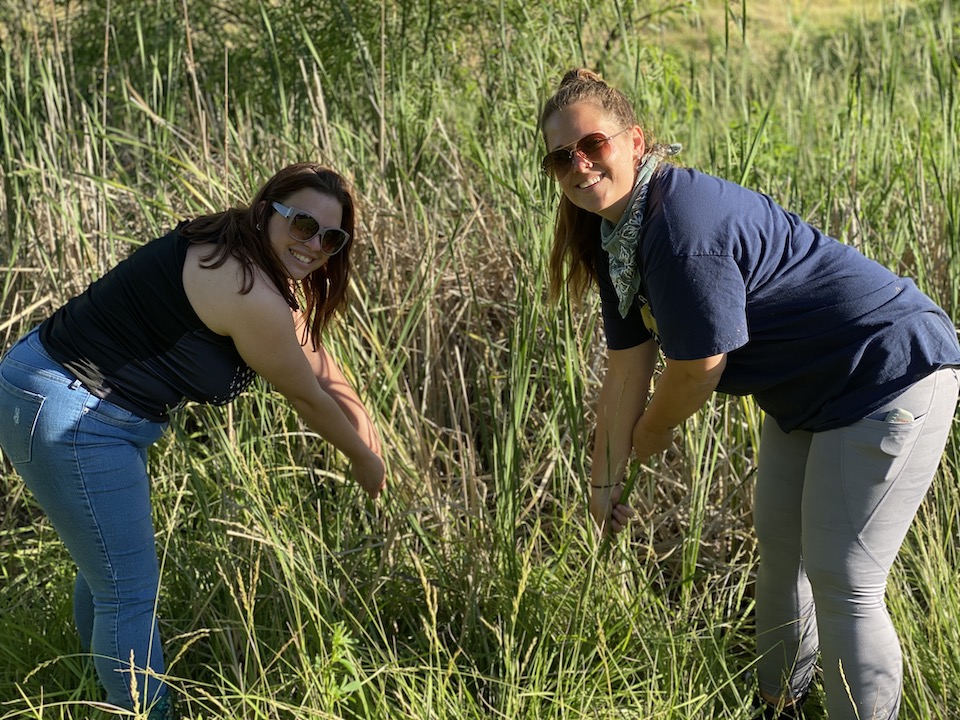
My friend and I headed out to Powder Creek Shooting Park, where I knew one of their ponds had a large gathering of cattails. We dove right in by pulling out what we thought were perfect cattails. You will notice that the base of the cattail is oval in shape, which is noticeable if it isn’t submerged in water. To collect the shoots, you will want to grab the inner part of the plant down low and pull. Some shoots you had to really get in there and use some muscles! Cattails are extremely prolific, not only by their seeds, but also spread by rhizomes. No need to worry about how many you collect.
Once we got the bundle of cattails, we headed home to finish the process.
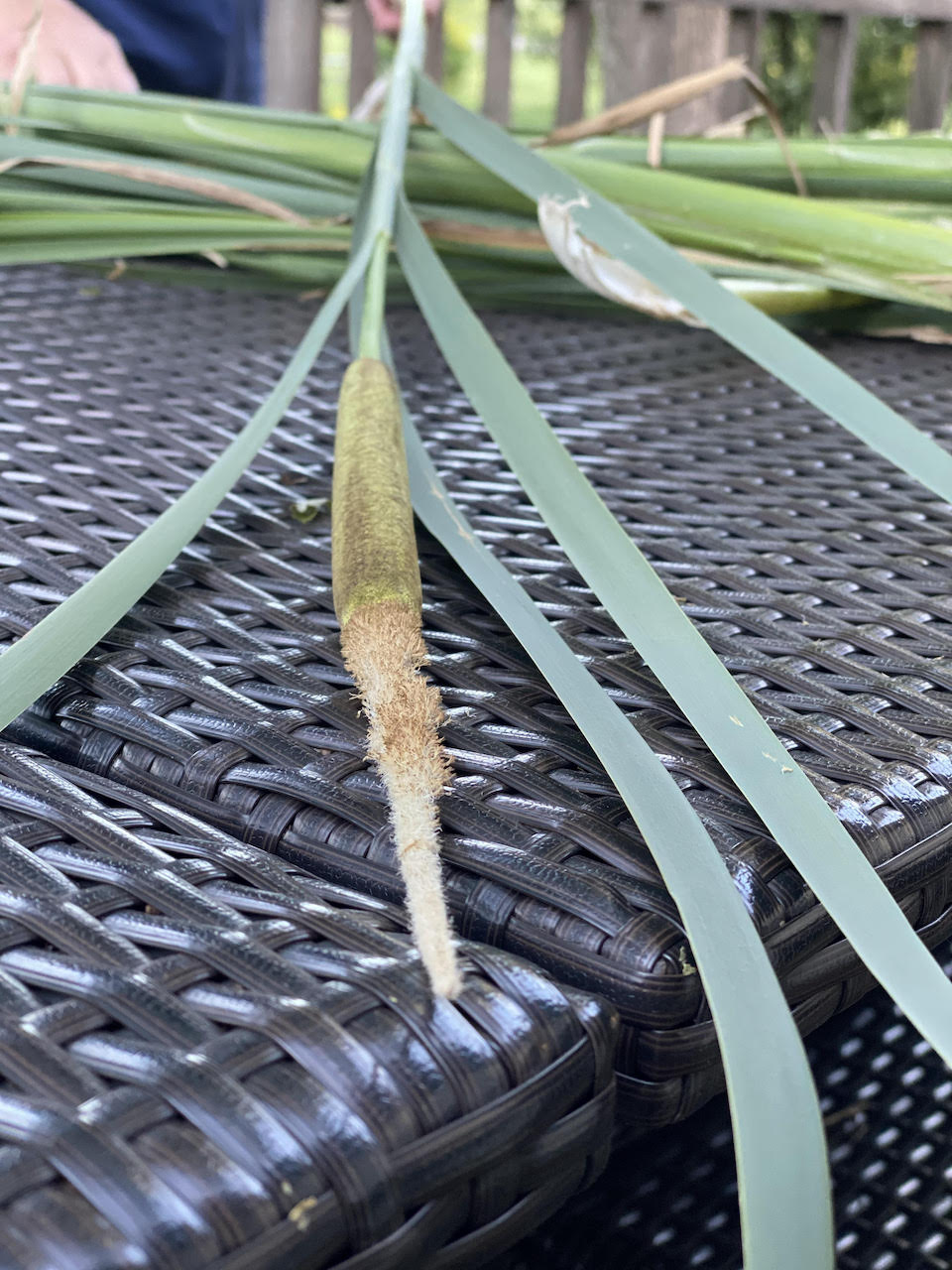
First step with cleaning up your cattails, is you just separate the outer husk from the shoot. This step was fun because they just peel away just like an onion. Peel off the layers until you reach the center core. You will notice the core is tender and no longer has leaves attached. The white tender part at the base of the stalk we just broke off. You can use a knife if you prefer, but they are so soft that they broke away easily. You will notice as you are peeling away the layers, a gelatinous substance will become present. This is edible as well and can be used as a thickener for stews! The stalks are great for basket weaving if you enjoy that craft. This round we were collecting the white tender base to use for a recipe. While you are working, go ahead and try one. Tastes similar to a cucumber!
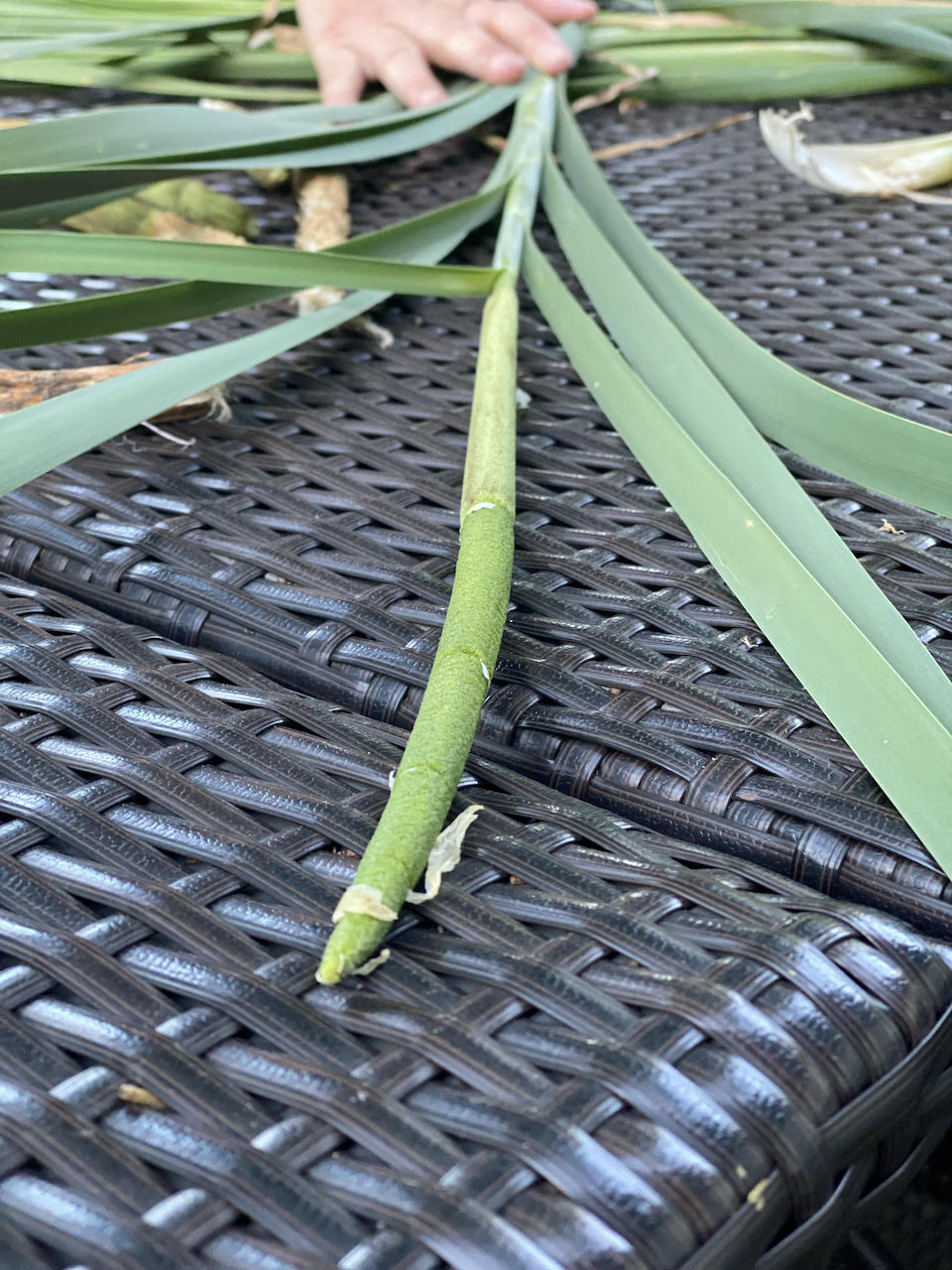
If you catch the cattail early enough, you can harvest the immature flower head. I’ve read you can steam them and eat them like corn on the cob. There are so many different recipes and uses for all parts of this plant. I can’t wait to experiment more!
Since this round of foraging focused on the tender core, I want to share what I ended up doing with the white tender part of the plant.
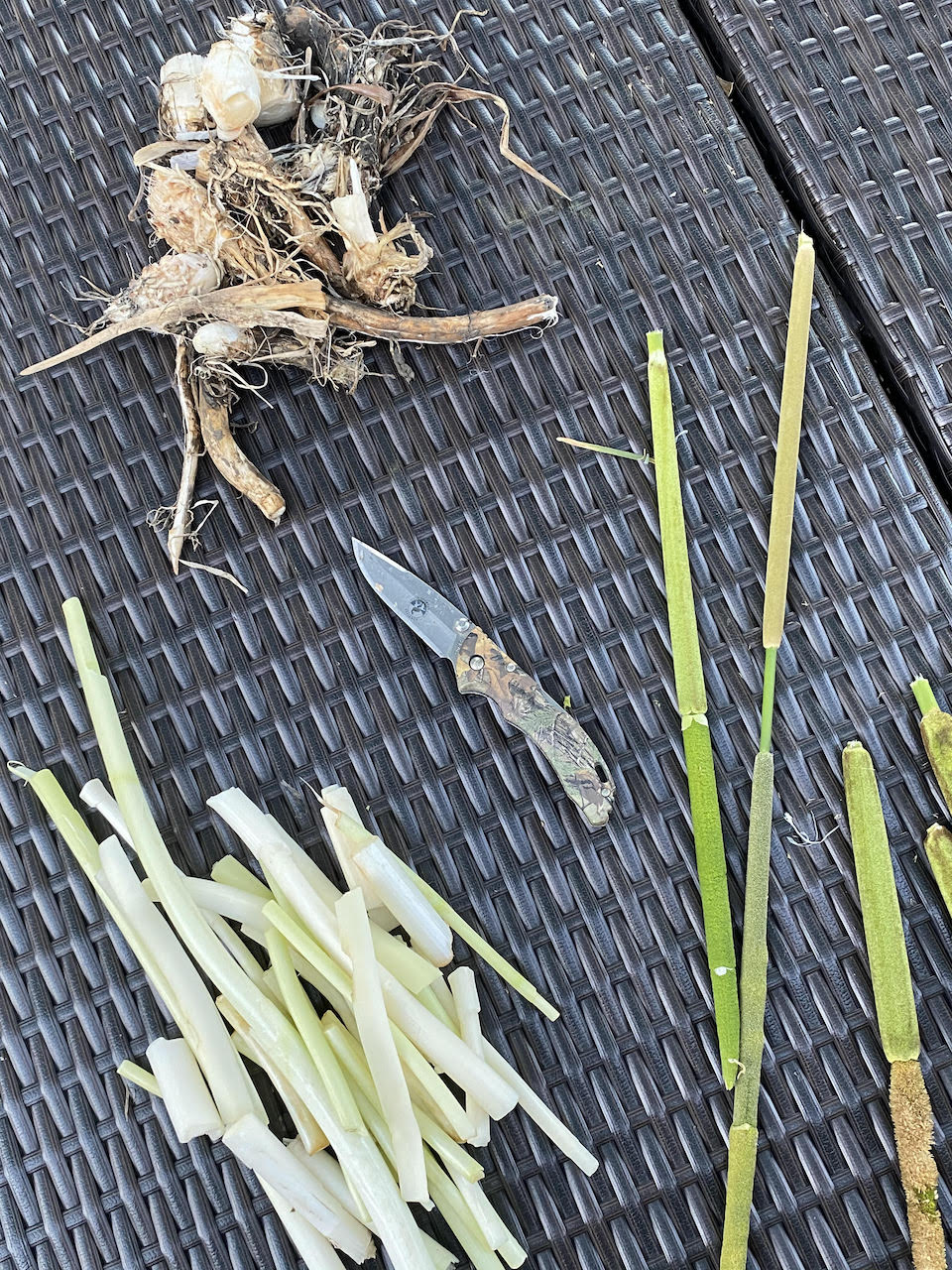
Start by peeling away the outer layer of the cattail until you reach the white tender part, usually the first five inches or so of the base.
Using a clean mason jar, stuff the jar with your collected cattail shoots.
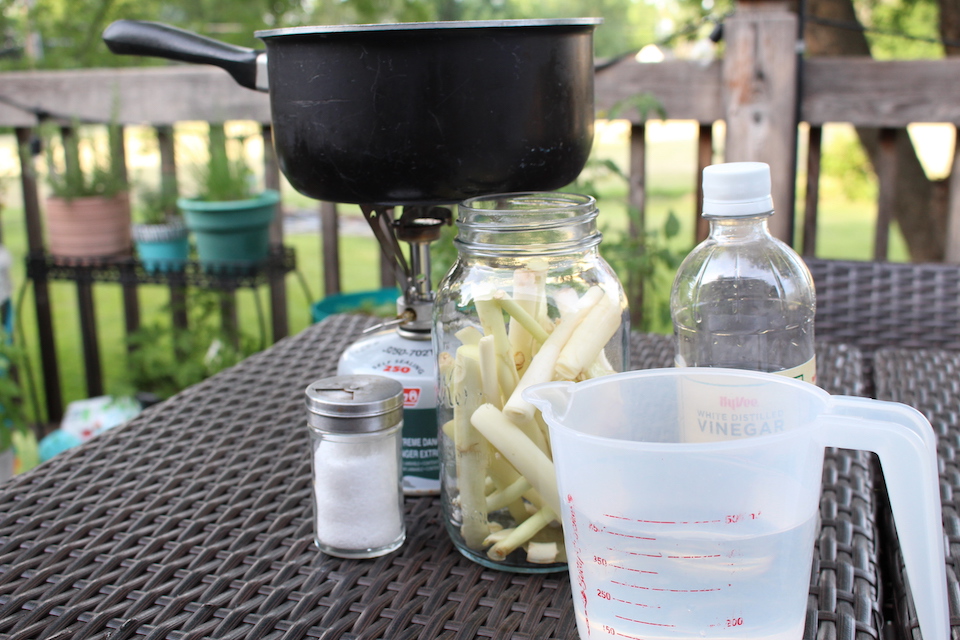
To my jar, I added a bay leaf, garlic cloves and a handful of fresh dill from my garden.
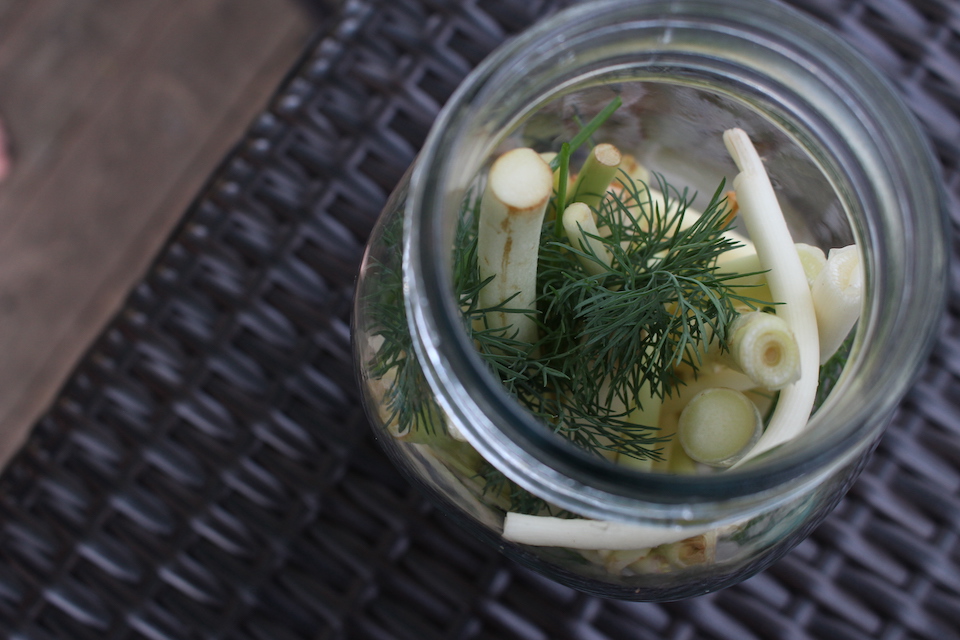
To make the pickling solution, you’ll want three cups of water, three cups of white vinegar, and five tablespoons of pickling salt. Because I only gathered enough cattails to fill one mason jar, I kept the ingredients for the brine solution low. You’ll want to add more ingredients for more cattails you harvested.
Bring your brine ingredients to a boil in a large saucepan. Stir well to dissolve the salt. Once the solution is boiling and the jars have all of your cattail pieces packed, slowly poor your brine into the jar. Leave the brine a half-inch below the rim of the jar for headspace.
Attach lids to your jars and store for at least a week in the fridge so they can get salty and pickle like. If you want, you can use traditional canning methods to seal the lids on the jars and store in your food pantry, instead of the fridge.
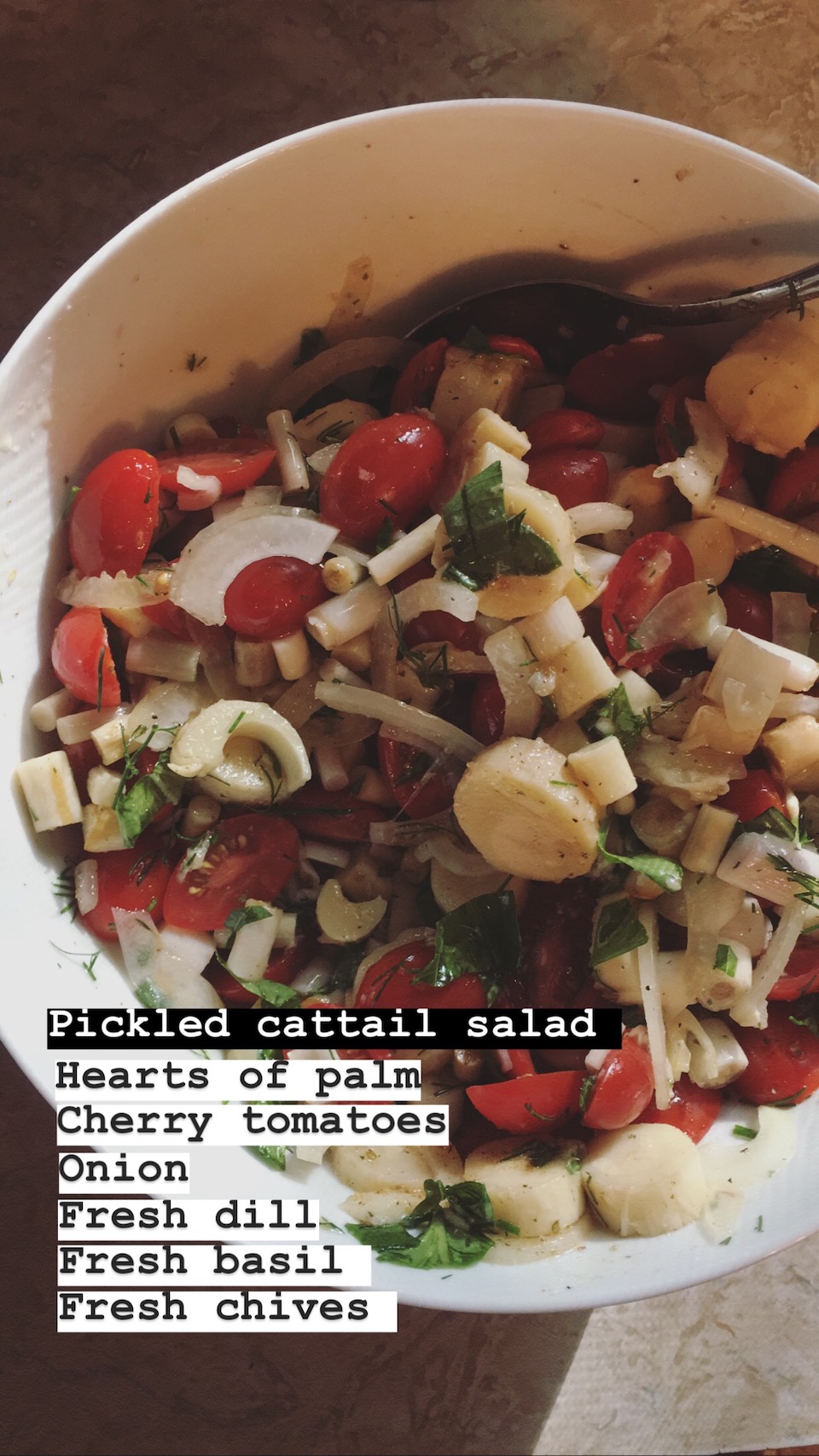
I ended up using my pickled cattails in a relish recipe of fresh cherry tomatoes, onion, hearts of palm, fresh dill, fresh basil and fresh chives.
Jessica White is the founder of Wander Woman Kansas, an outdoor education program for women near the Kansas City area. She grew up with a family that spends time outdoors, which provided her a great deal of experiences. She has gone on every kind of hunting and fishing trip imaginable with her Dad. While he liked that part of the outdoors, her Mom, on the other hand, taught her the love of camping, canoeing, caving, rappelling and all kinds of outdoor sports. Jessica still enjoys trips with them, but she started Wander Woman to encourage other women to find themselves in the outdoors. View all posts by Jessica White